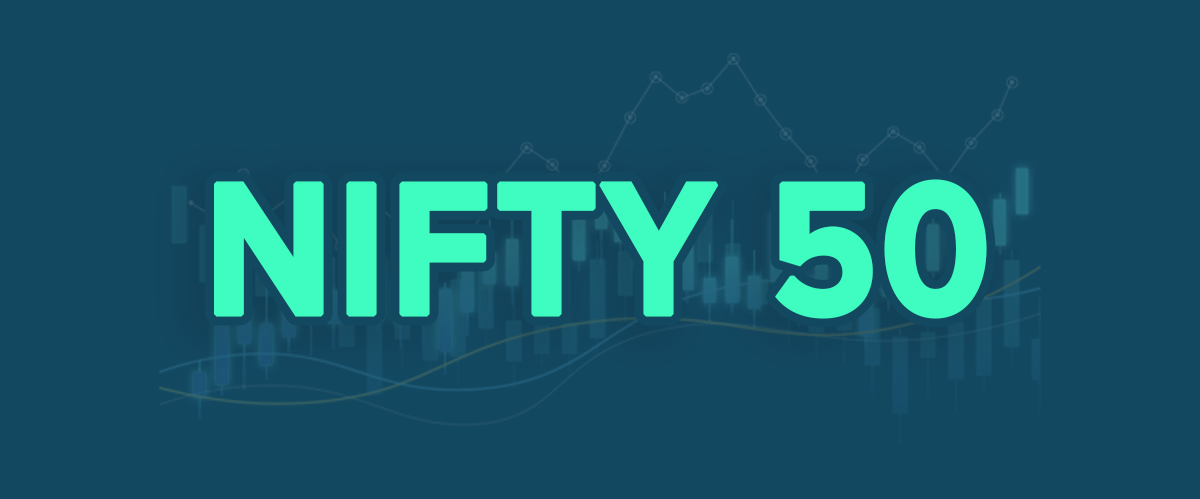The Nifty 50 is one of the most important stock market indices in India, serving as a benchmark for the performance of the Indian equity market. This index, managed by the National Stock Exchange of India (NSE), comprises 50 of the largest and most liquid stocks listed on the exchange. In this article, we will delve into the details of the Nifty 50, exploring its significance, composition, calculation methodology, historical performance, and its role in investment strategies.
What is Nifty 50?
The Nifty 50 is a stock market index that represents the weighted average of 50 of the largest publicly traded companies on the NSE. Launched in 1996, it provides a comprehensive view of the Indian equity market and is widely used by investors, analysts, and financial professionals to gauge market performance. The index encompasses various sectors, ensuring diversification and reflecting the overall economic conditions in India.
Key Characteristics
- Number of Stocks: The Nifty 50 comprises 50 stocks, which are selected based on their market capitalization, liquidity, and sector representation.
- Market Capitalization: It focuses on large-cap companies, ensuring that the index reflects the performance of the most significant players in the market.
- Sectoral Representation: The index includes stocks from various sectors, such as financial services, technology, consumer goods, healthcare, and more, providing a holistic view of the market.
Composition of Nifty 50
The Nifty 50 index is made up of companies from different sectors, which ensures that it reflects the performance of the broader market. As of now, the index includes some of the most well-known companies in India. Here’s a look at the top sectors represented in the Nifty 50:
- Financial Services: This sector typically holds the largest weight in the index, featuring companies like HDFC Bank, ICICI Bank, and Kotak Mahindra Bank.
- Information Technology: Companies like Infosys, Tata Consultancy Services (TCS), and Wipro are prominent in this sector, reflecting India’s growing tech landscape.
- Consumer Goods: Fast-Moving Consumer Goods (FMCG) companies such as Hindustan Unilever and Nestlé India are included, showcasing the demand-driven nature of this sector.
- Pharmaceuticals: With companies like Sun Pharma and Dr. Reddy’s Laboratories, the pharmaceutical sector is crucial for healthcare representation.
- Automobile: This sector includes major players like Maruti Suzuki and Tata Motors, which are essential for the Indian manufacturing landscape.
Sector Weightage
The Nifty 50 index is weighted by free float market capitalization, which means that companies with higher market capitalization have a greater influence on the index’s movement. This feature is crucial as it allows investors to understand the sectors that are driving market performance.
Calculation Methodology
The Nifty 50 is calculated using a float-adjusted market capitalization method. This means that only the shares available for trading (the free float) are considered in the calculation, excluding promoter holdings and other locked-in shares.
Formula
The formula for calculating the Nifty 50 index is:
Nifty 50=Current Market CapitalizationBase Market Capitalization×Base Index Value\text{Nifty 50} = \frac{\text{Current Market Capitalization}}{\text{Base Market Capitalization}} \times \text{Base Index Value}Nifty 50=Base Market CapitalizationCurrent Market Capitalization×Base Index Value
- Current Market Capitalization: The total market capitalization of the selected 50 stocks at the current market price.
- Base Market Capitalization: The market capitalization of the 50 stocks as of the index’s base date, which is November 3, 1995.
- Base Index Value: The index value assigned to the base date, which is set at 1000.
Rebalancing
The Nifty 50 is reviewed semi-annually, and stocks may be added or removed based on their performance, liquidity, and market capitalization. This ensures that the index remains relevant and accurately reflects the current market conditions.
Historical Performance
The Nifty 50 has seen significant growth since its inception in 1996. Initially launched with a base value of 1000, the index has surpassed 18,000 points, demonstrating the robust growth of the Indian economy and its equity markets.
Major Milestones
- Launch: The Nifty 50 was launched in 1996 with 50 stocks.
- First Major High: In 2008, the index reached its first major peak of around 6,300 points before the global financial crisis.
- Post-Crisis Recovery: After the market crash in 2008, the Nifty 50 gradually recovered, crossing the 10,000-point mark in 2017.
- Recent Peaks: The index crossed the 15,000-point milestone in 2021 and reached above 18,000 points in 2022, highlighting the resilience and growth potential of the Indian market.
Factors Influencing Performance
Several factors influence the performance of the Nifty 50:
- Economic Indicators: GDP growth, inflation rates, and interest rates have a direct impact on the index.
- Global Market Trends: Global economic conditions, foreign investments, and geopolitical factors can also influence the Nifty 50’s performance.
- Sectoral Developments: Performance in key sectors like IT, financial services, and pharmaceuticals can lead to significant movements in the index.
Importance of Nifty 50
The Nifty 50 index plays a crucial role in the Indian financial market for several reasons:
Benchmark for Investors
The Nifty 50 serves as a benchmark for portfolio performance. Investors and fund managers often compare their fund’s performance against the index to assess their effectiveness in generating returns.
Investment Products
Various financial products, such as Exchange-Traded Funds (ETFs) and index funds, are based on the Nifty 50. These products allow investors to invest in a diversified portfolio of stocks that replicate the index, making it easier for retail investors to participate in the equity market.
Economic Indicator
The Nifty 50 is often viewed as a barometer of the Indian economy. Movements in the index can indicate investor sentiment, market trends, and overall economic health, making it a valuable tool for analysts and policymakers.
Trading Nifty 50
Trading the Nifty 50 can be an excellent strategy for investors looking to capitalize on market movements. There are several ways to trade the index:
Nifty Futures and Options
Investors can trade Nifty futures and options contracts, allowing them to speculate on the index’s future movements. These derivative instruments can offer significant leverage but also come with higher risks.
Exchange-Traded Funds (ETFs)
Nifty 50 ETFs are popular investment vehicles that allow investors to buy shares that represent the index. These funds track the performance of the Nifty 50 and are traded on the stock exchange like individual stocks.
Index Funds
Index funds that track the Nifty 50 are another option for passive investors. These funds aim to replicate the performance of the index, offering a low-cost way to invest in a diversified portfolio.
Conclusion
The Nifty 50 is a vital component of the Indian stock market, providing insight into the performance of the country’s leading companies and overall economic health. With its well-structured methodology and diverse sectoral representation, it serves as a benchmark for investors and a reflection of market sentiment. Whether through direct investment in stocks, ETFs, or derivatives, understanding the Nifty 50 is crucial for anyone looking to navigate the Indian equity markets successfully. As India’s economy continues to grow, the Nifty 50 will likely remain a key player in shaping investment strategies and reflecting market trends.




